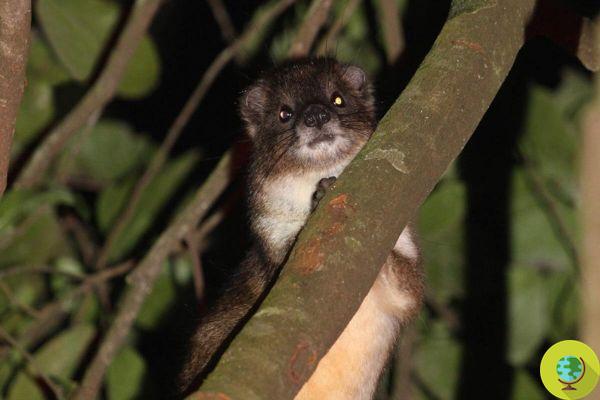
Three new species of nocturnal mammals from the mountain forests of Taita, Kenya, have been described for the first time.
Active especially at night among the canopies of the trees of the tropical forests of Africa and with calls exceeding 100 decibels: three new species of arboreal mammals nocturnal species in the mountain forests of Taita, Kenya, have been described for the first time in a new study that starts from their beautiful vocalizations.
They are the arboreal hyrax (Dendrohyrax sp.), The greater small-eared galago (Otolemur garnettii) and the dwarf galago (Paragalago sp.) And the recently published research "Vocalization Analyzes of Nocturnal Arboreal Mammals of the Taita Hills, Kenya" by a team of Finnish, British and Kenyan researchers, reveals that probably the "strangled screams" that were recorded in the mountain forests of Taita belong to a species and a taxon hitherto unknown to science.
Read also: New whale species discovered off the coast of Mexico
“The call of the arboreal hyrax can continue for more than 12 minutes and is composed of several syllables that are combined and repeated in various ways - they say. And the singing animals are probably males trying to attract females willing to mate, ”continues the study's lead author, Hanna Rosti of the University of Helsinki and the Luonnontieteellinen keskusmuseo Luomus.
Additionally, the study confirms that Taita's dwarf mountain galago, first reported in 2002, but of which no trace had been found for nearly 18 years, may be a distinct species.
What are they saying? Research on #vocalization of night-time active mammals, #galago and #hyrax, climbing on trees in the mist forests of #TaitaHills by @HannaRosti et al. @helsinkiuni @luomus @KumpulaScience #TaitaResearchStationhttps://t.co/8atnl0vYI2 pic.twitter.com/mbA8VEGgBj
- Petri Pellikka (@PetriPellikka) December 22, 2020
What is certain is that the data confirm that the greater small-eared galago subspecies living in the Taita Hills is Otolemur garnettii lasiotis. The calls of the dwarf galago of the Taita hills closely resemble those of the dwarf galago of the Kenyan coast (Paragalago cocos), experts explain, so the population of the Taita hills probably belongs to this species. The dwarf galago of the Taita Hills are geographically isolated from other dwarf galago populations and live in the montane rainforest, which is an unusual habitat for P. cocos.
“Curiously, two subpopulations of dwarf galago living in separate wooded areas in the hills of Taita, Ngangao and Mbololo, have clearly different contact calls. Paragalagos in the Mbololo forest may represent a population of P. cocoscon with a repertoire of derived calls or, alternatively, they may actually be mountain dwarf galagos (P. orinus). Thus, differences in the habitat, behavior and structure of the contact calls suggest that there may be two different species of Paragalago in the mountain forests of the Taita Hills. "
Now the results of the new study also suggest that the two dwarf galago populations found in the Taita Hills may belong to different species. The calls of animals of the smaller population are very similar to those of the Kenyan coast dwarf galago, a species previously thought to live only in low-lying coastal forests. The peculiar calls of the second population cannot yet be connected with certainty to any known species ».
Another author of the study, Henry Pihlström of the Molecular and Integrative Biosciences Research Program at the University of Helsinki, who examined the taxonomy of hyrax and tree galagus, recalls that "the taxonomy of many nocturnal mammals remains poorly understood and many populations are not are still being studied ".
For a change, however, the "new" galago already seems to be on the verge of extinction. Jouko Rikkinen, another author of the research and scholar of Taita Hills biota since 2009, warns that the future of Taita dwarf mountain galagus and other endemic plant and animal species depends on the future of the native mountain forests of the Taita Hills.
A paradox: the Taita Hills belong to the Eastern Arc Mountains, which are a valuable hotspot of global biodiversity. Here the number of endemic species is remarkably high and yet their extinction is just around the corner.
Source: Discovery
Read also:
- Popa Langur, the new primate species discovered in Myanmar of which only 260 specimens remain
- A new species of jumping spider has been discovered: it is blue and microscopic
- Salazar Slytherin, scientists discover a new species of viper and take inspiration from Harry Potter to name it


























